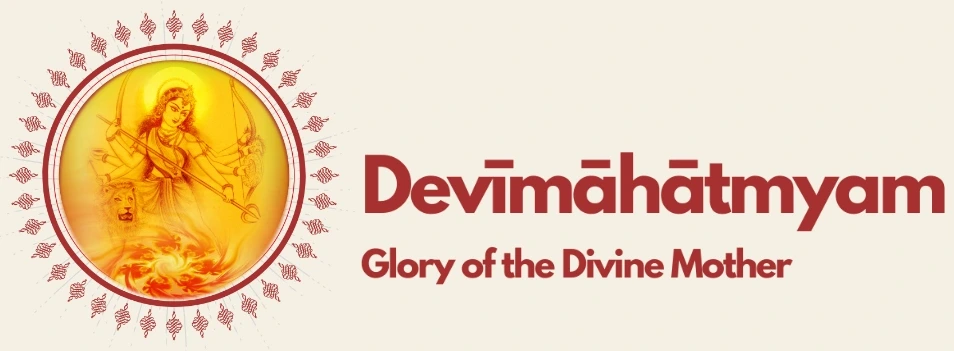Prayoga
The Saptaśati has been acclaimed as a great Sādhanā Śāstra, a practical manual, an Artha Śāstra a purposive science. The Tantric seers have laid down certain methods by practising which the text becomes an unfailing companion in the journey of life. As many have followed these methods and achieved results, they are sure and safe. We shall discuss such methods, prayogas, here.
First and foremost we have to appreciate a fact which is fundamental to Mantra Sadhana. “Prayer to an indefinite something, to an Impersonal divinity can only evoke an impersonal or indefinite response. If a response, is sought to be evoked for a particular need, the prayer could be fruitful when it is addressed to a canalised centre of the Divinity, the Personal form which is active for the purpose in question, and that is precisely what the Devata in its higher sense is in the Tantra.“1 It is true that there is one Supreme Deity presiding over everything. It is also true that there exists a number of gods and goddesses. The one does not negate the many. The one god does not overrule the other gods in their respective fields of operation. He is the soul, they are his limbs sa ātmā aṅgāni anyā devatāḥ. And each limb of his has a specific function to perform in creation. There is a gradation and a heirarchy of delegated functions and the gods deriving their authority from the supreme Godhead are posited in various planes on the rising tier of consciousness. It is very easy for the human being to get in touch with the gods in the lower levels of this pyramidal structure of consciousness. They are posited in levels very near to him and so the results are spectacular in the beginning. But these lower classes of deities, Kṣudra devatās, do not lead a person very far. Soon, the progress comes to a stand still. But if a person chooses a deity in the higher cadre and is guided properly by a Guru in his quest, slowly but surely he progresses and gets indications of the grace of the deity he worships. Marvelling at the abounding grace, he grows in devotion towards the Godhead. Slowly a relationship is established and a living concourse takes place between the sadhaka and his chosen deity, Iṣṭa devatā. He gets into the habit of referring every one of his acts to the deity within him and learns to wait on the Divine Grace for the success of his undertakings. Most men take to the worship of a deity to achieve some objective in life. But the worship results in strengthening the bonds between the sadhaka and the deity and in course of time that has a greater pull and attraction than the objective with which he originally started the worship. Finally, these objectives pale into insignificance or vanish altogether because they either become fulfilled or replaced by higher objectives and all these objectives finally converge towards the supreme objective in life which is the ultimate goal of all spiritual paths. Read more…
(1. Further Lights: The Veda and the Tantra by Sri Kapali Sastriar.)

